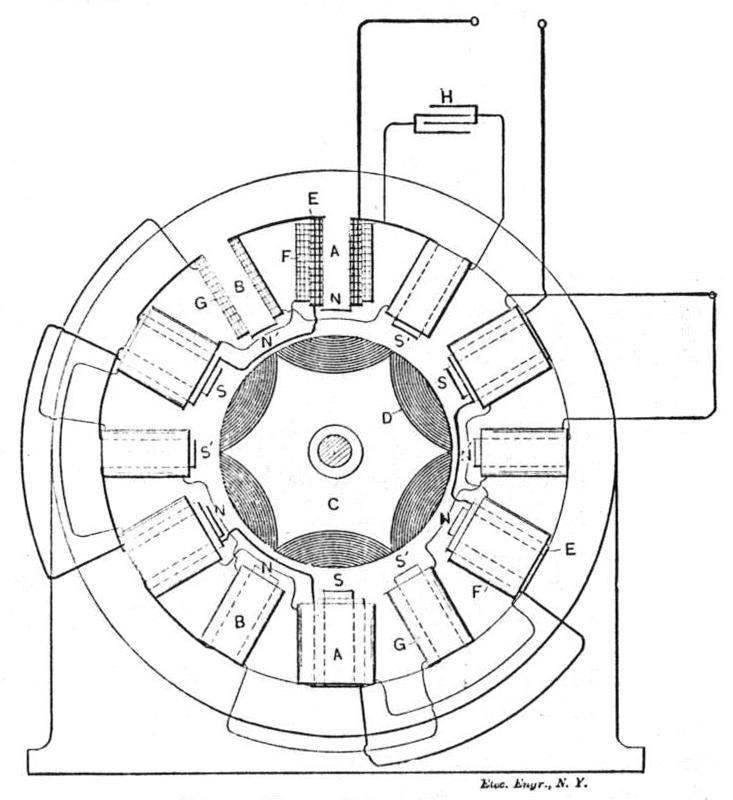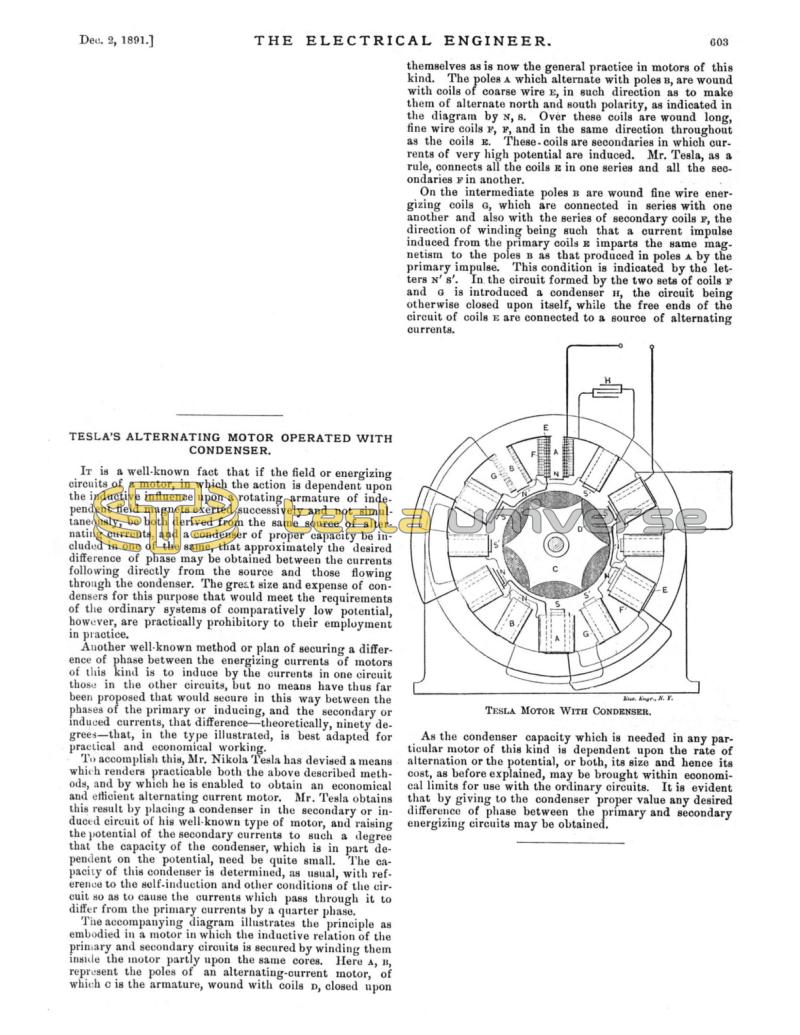
Nikola Tesla Articles
Tesla's Alternating Motor Operated with Condenser
It is a well-known fact that if the field or energizing circuits of a motor, in which the action is dependent upon the inductive influence upon a rotating armature of independent field magnets exerted successively and not simultaneously, be both derived from the same source of alternating currents, and a condenser of proper capacity be included in one of the same, that approximately the desired difference of phase may be obtained between the currents following directly from the source and those flowing through the condenser. The great size and expense of condensers for this purpose that would meet the requirements of the ordinary systems of comparatively low potential, however, are practically prohibitory to their employment in practice.
Another well-known method or plan of securing a difference of phase between the energizing currents of motors of this kind is to induce by the currents in one circuit those in the other circuits, but no means have thus far been proposed that would secure in this way between the phases of the primary or inducing, and the secondary or induced currents, that difference - theoretically, ninety degrees - that, in the type illustrated, is best adapted for practical and economical working.
To accomplish this, Mr. Nikola Tesla has devised a means which renders practicable both the above described methods, and by which he is enabled to obtain an economical and efficient alternating current motor. Mr. Tesla obtains this result by placing a condenser in the secondary or induced circuit of his well-known type of motor, and raising the potential of the secondary currents to such a degree that the capacity of the condenser, which is in part dependent on the potential, need be quite small. The capacity of this condenser is determined, as usual, with reference to the self-induction and other conditions of the circuit so as to cause the currents which pass through it to differ from the primary currents by a quarter phase.
The accompanying diagram illustrates the principle as embodied in a motor in which the inductive relation of the primary and secondary circuits is secured by winding them inside the motor partly upon the same cores. Here A, B, represent the poles of an alternating-current motor, of which C is the armature, wound with coils D, closed upon themselves as is now the general practice in motors of this kind. The poles A which alternate with poles B, are wound with coils of coarse wire E, in such direction as to make them of alternate north and south polarity, as indicated in the diagram by N, S. Over these coils are wound long, fine wire coils F, F, and in the same direction throughout as the coils E. These coils are secondaries in which currents of very high potential are induced. Mr. Tesla, as a rule, connects all the coils E in one series and all the secondaries F in another.
On the intermediate poles B are wound fine wire energizing coils G, which are connected in series with one another and also with the series of secondary coils F, the direction of winding being such that a current impulse induced from the primary coils E imparts the same magnetism to the poles B as that produced in poles A by the primary impulse. This condition is indicated by the letters N’ S’. In the circuit formed by the two sets of coils F and G is introduced a condenser H, the circuit being otherwise closed upon itself, while the free ends of the circuit of coils E are connected to a source of alternating currents.
As the condenser capacity which is needed in any particular motor of this kind is dependent upon the rate of alternation or the potential, or both, its size and hence its cost, as before explained, may be brought within economical limits for use with the ordinary circuits. It is evident that by giving to the condenser proper value any desired difference of phase between the primary and secondary energizing circuits may be obtained.

